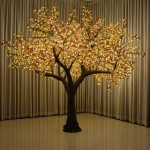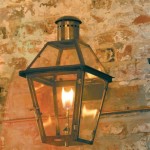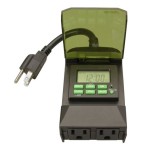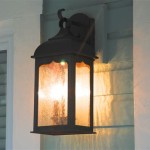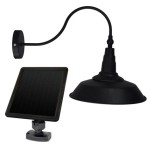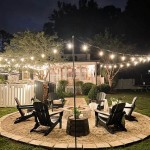Essential Aspects of Outdoor Park Lighting Design
Outdoor park lighting design plays a pivotal role in transforming public green spaces into safe, inviting, and aesthetically pleasing places for all. As darkness envelops, a well-illuminated park not only enhances the ambiance but also promotes community engagement, physical activity, and overall well-being. Careful consideration should be given to lighting design to achieve optimal results and maximize the use of these vital community assets.
The design process for outdoor park lighting involves several key considerations, including:
- Purpose and Usage: Determine the primary purpose of the park (e.g., recreation, relaxation, sports) and the activities that typically occur during evening hours.
- Park Layout: Assess the park's size, shape, and architectural features to identify areas requiring illumination and ensure that lighting complements the overall design.
- Safety: Lighting should enhance visibility and deter crime, providing a sense of security for park users. Consider lighting pathways, entrances, gathering areas, and any potential hazards.
- Aesthetics: Lighting should not only be functional but also aesthetically pleasing, blending harmoniously with the park's natural surroundings and architectural elements.
- Ecological Impact: Choose lighting fixtures and technologies that minimize light pollution and protect nocturnal wildlife.
- Energy Efficiency: Implement energy-efficient lighting systems, such as LED fixtures, to reduce operating costs and minimize environmental impact.
- Maintenance: Consider the long-term maintenance and repair requirements when selecting lighting fixtures and establishing lighting zones.
To achieve a successful outdoor park lighting design, it is recommended to engage a professional lighting designer who possesses expertise in the field and can provide customized solutions tailored to the specific needs of the project.
Lighting Techniques and Fixture Selection
Various lighting techniques and fixture types can be employed to achieve the desired effects in outdoor park lighting design.
- Ambient Lighting: Provides general illumination throughout the park, creating a sense of openness and security.
- Task Lighting: Focuses on specific areas, such as play equipment, sports fields, or seating areas, to enhance visibility for specific activities.
- Accent Lighting: Highlights architectural features, trees, or sculptures, creating visual interest and depth.
Fixture selection should consider factors such as durability, vandal resistance, weather resistance, and aesthetic compatibility with the park's design.
Park Lighting Zones
To ensure efficient lighting and energy conservation, parks can be divided into different lighting zones based on their usage patterns and requirements:
- High-Activity Zones: Playgrounds, sports fields, and other areas with intensive use require brighter lighting levels.
- Moderate-Activity Zones: Pathways, picnic areas, and seating areas require moderate lighting levels for safety and comfort.
- Low-Activity Zones: Peripheral areas with minimal use can have lower lighting levels, while still providing sufficient visibility.
Safety Considerations
Safety should be a paramount concern in outdoor park lighting design. Proper illumination can deter crime, reduce accidents, and create a sense of security for park users. Consider the following safety aspects:
- Eliminate Dark Spots: Ensure that all areas of the park are adequately lit, including corners, pathways, and entrances.
- Control Glare: Avoid excessive glare from lighting fixtures, which can impair visibility and create discomfort.
- Consider Motion Sensors: Install motion sensors in low-activity zones to activate lighting only when necessary, reducing energy consumption and improving security.
Environmental Impact
Outdoor park lighting design should prioritize the preservation of the night sky and minimize ecological impact. Utilize fixtures that minimize light trespass, upward light pollution, and glare. Consider using shielded fixtures, downlighting techniques, and warm-colored LED lights to reduce disturbance to wildlife.
Conclusion
Outdoor park lighting design is a crucial aspect of creating functional, safe, and aesthetically pleasing public spaces. By carefully considering the purpose of the park, its layout, and the needs of users, lighting designers can create lighting schemes that enhance the ambiance, promote community engagement, and protect the environment. A well-illuminated park invites people to linger longer, engage in activities, and enjoy the beauty of nature after dark.

Pin On Landscape Architecture

Parks And Recreation Lighting Municipal Solutions Holophane

Outdoor Environments Archives Reed Burkett Lighting Design

Outdoor Parking Lighting Design By Using Dialux Evo

Outdoor Lighting Trends Our Designers Have Their Eyes On Signature Illumination Designs

5 Guidelines To Parking Lot Lighting Design Gbl Inc

Lighting Can Help Change Your Businesses 1st Impression

An Out Door Lighting Design For A Car Park Parking

Public Light Water Shapes

Lighting For Park And City Centre Fagerhult International
Related Posts
